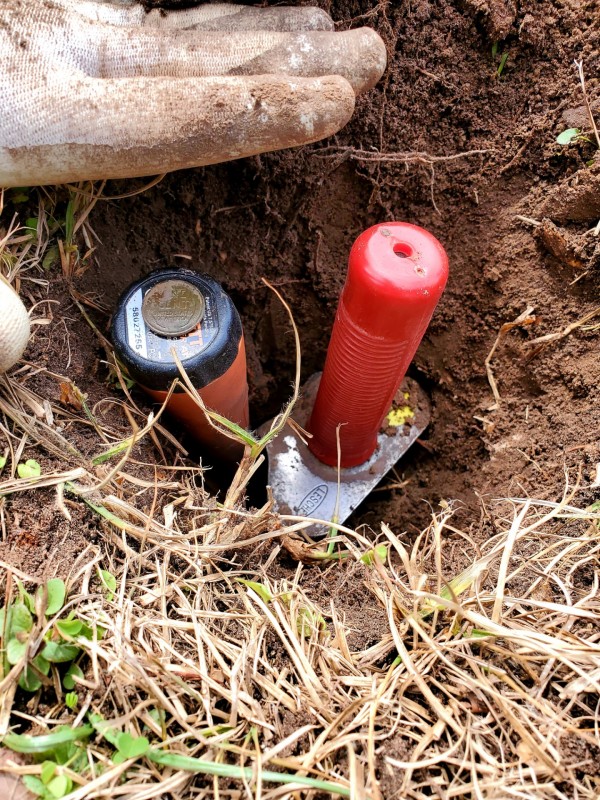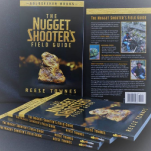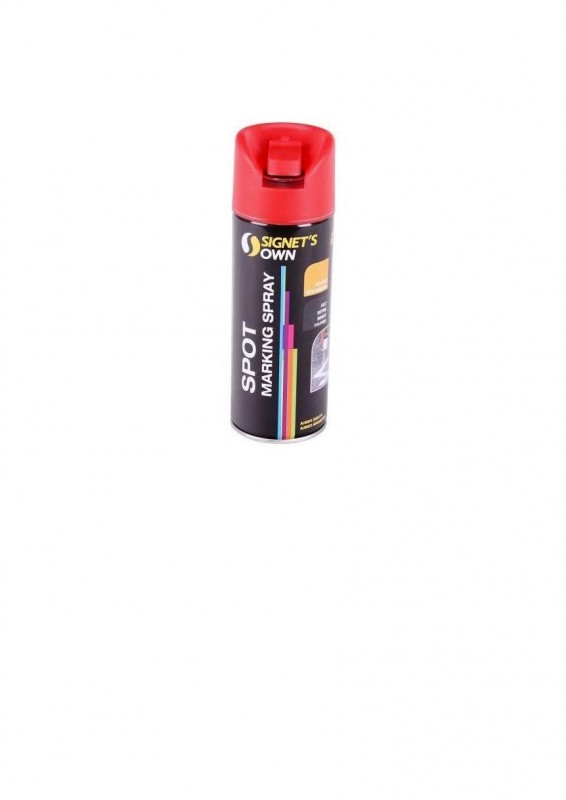Leaderboard
Popular Content
Showing content with the highest reputation on 02/22/2021 in all areas
-
Cold day today, only got up to about 36, but the wind died down enough to go out in the farm. Another great day! Usually I find buttons, but I'm moving more toward where an 1800s house was so I expect there to be a mix. There is a road that ran through the farm way before it was built so I will find 1700s items too. Today the ground was a bit frozen so I dialed recovery speed back to 2 from 3 (Equinox 600), and cranked the sensitivity up to 21. Not sure if this helped but the proof is in the finds I guess. I was only able to make four passes up and back, it's about 300 yards one way. Photo below illustrates the distance, my golf cart is by the road. I'm doing a grid search so it is very tedious but still a blast. Found a really small thimble, a piece of buckle, a very small button and two heavily corroded pennies, one a wheat penny with no discernable date (edit: if you zoom the penny it appears to be a 1919 ) and the other an 1865 Indian head. My grandkids gave me a digital microscope for my birthday, and the date stands out pretty clear! Yes, I found yet another Spanish (really Mexico mint) half Real. This one clearly shows the mint mark in the microscope, they were minted from 1772 to 1784, but I can't find a date. The first one I found was 1778. There are a few other identifying marks on it. And just as I thought I was done, in the last 20 feet I got a solid 16, and popped out the gold plated broach with 4 stones. The stones are yellowish under the microscope, and one appears to be chipped so I know they are not diamonds. They still sparkle though! There is a bit of gold plating in the back and a spot where the pin was attached.13 points
-
I made it out to Gold Basin for a couple days of hunting until a high wind advisory chased me out on Saturday with a wind gust forecast of it hitting 50mph in the Arizona desert on high ground. The wind started to pick up around 7pm by morning it was buffeting the trailer pretty good. I picked up camp and found a spot protected enough from the wind I could unlatch and drop the top on my a-frame without a strong gust hitting at the wrong time ripping off the roof. Luckily all went without incident and the drive home was uneventful. the couple pieces I picked up were found on a low bench above the wash at the beginning of the transition from the hillside the larger specimen 19.8g total (tested around 1.5g gold) down about 8” gave a soft deeper mellow high-low, the small piece at .3g with a bit of quartz attached a similar signal down a few inches. the little meteorite also in the same area and down a few inches hit really hard on the GPZ, a small window shows a high concentration of Iron nickel specks.9 points
-
Yep. That was the question I was attempting to answer with my response. For those who don't know - the backstory on why the GPX 5000 is used for relic hunting over the Equinox 800 is related to detecting highly mineralized hot dirt sites. That happens to be the case for a number of prime CW sites in Virginia and Pennsylvania. Culpeper is a popular CW detecting area because it was the site of a few battles but mostly because both North and South Army units regularly used Culpeper for long-term winter encampments. As a result, hundreds of thousands of soldiers had nothing to do to pass the boredom than drink, play cards, shoot their weapons, try to stay warm, and not get sick. In the process they lost or left behind a lot of accoutrements (buttons, badges, belt plates, brass knapsack hooks, personal items, coins, bottles, and of course dropped and fired minie balls). It also happens to have some of hottest dirt in the region. Pegged magnetite meters are the norm. Therefore, when you observe the detectorists in the repeated semi-annual and annual group relic hunts, you will see 200 - 400 people gathered at a 4000 acre farm and 90% are swinging a GPX to achieve the depth needed to find the deep relics that were missed by the years of VLF detector cherry picking. The NOX will find stuff in those fields if it just happens to be hanging out at 4 to 6 inches and was somehow missed, but nowhere near the foot and half of depth you can achieve with a GPX under those conditions. It is not an either or proposition. The Equinox and any other VLF is just a backup substitute if your GPX breaks, shoulder gives out, or if you can't afford a PI. If that's the case you know you are running at a disadvantage compared to the other folks swinging the GPX's9 points
-
Went out today for another session,long walk and lots of digging .Not sure how many miles i did but a few nice weather again,with the nox and a spade ,lots of WW2 remains,and .......1 9ct Gold ring with 3 semi precious stones .Bullets registered 14/15/16 Bullet case around 20/ Fishing weight High 20s Gold ring 6/8 100% of the bullets tip were identified...... Was running at Reac 2 ,pinpointing at 4,signal are longer but thats fine with me Enjoy RR6 points
-
Yes that's what we all want, but it's hard to get or manufacture a new lamborghini car for the price of a new ford car.6 points
-
CalReg, rf1 and 67GTA, I live and often hunt in a suburban/urban area with tons of EMI and moderate to high mineralization. No amount of ground balancing or noise cancelling will eliminate it completely if one or the other or both in my area, are really bad. Ground balancing here is a moving target and the auto noise cancelling could best be called possible auto noise reduction. That is a sign of how sensitive to a full spectrum of target signals Multi IQ is......... There is EMI from above ground and below ground power lines, EMI from Wi Fi/ethernet/Bluetooth, Broadband, there is EMI from traffic signals and even from wireless municipal sprinkler systems, airports, law enforcement and military installations, and from normal tv and radio signals. So I don't run my Equinox at a pre-set sensitivity. I run mine depending on the ground and EMI conditions. Sometimes that means I can't go over 18, sometimes I can run it at 20, very rarely do I have the luxury of running mine at 21 or 22 and I have never run it at 24/25 within 50 miles of a large city. If I tried to do that, I would not know a real target from ground noise or EMI and my numerical target ID display would never read -- -- but would be constantly changing with numbers throughout the target ID range including -9 and +39/40 and in 50 or 5 tones my ears would be bombarded with noise. Despite this situation, since purchasing a Nox 600 in early 2018 and an 800 a few months later, I have mostly only been able to run sensitivity at 20 or below while finding over $3,000 in modern clad, over $4,000 melt value in gold jewelry, almost a pound of silver jewelry, 48 silver US coins from the 1850s to 1963 and silver Canadian coins, too many V nickels, buffalos, wheats and indians to count and several really nice Plains Indian Wars US Cavalry relics from the mid 1800s. Many of the best finds were deeper than 10" and some were at 14" running below 22 sensitivity, just with the stock 11" coil and all of those deep targets had numbers and tones that let me know they were a low, mid or high conductor non-ferrous target. I was able to correctly call most of them before digging them. The Equinox is that good even at 18 sensitivity....... I am not spouting off, bragging or blabbering to get attention with those figures. I am just trying to help you. Running sensitivity so high that ground and EMI conditions prevent hearing good, shallow or deep signals is totally counterproductive. Des Dunne who died recently, bless his soul, was one of the pre-production field testers that asked Minelab to cap sensitivity on the Equinox at 20. The areas he did his testing in just had too much EMI and/or mineralization to run it any higher. I'm glad that Minelab left it at 25 but for instance, I rarely drive my cars over the safe speed limit even though one of them has 120mph on the speedometer. So, feel free to run your sensitivity as high as you want..........but you may be bombarded with so many ghost signals that you won't know what to dig.5 points
-
5 points
-
Not really recommended for relic hunting at the release price without the iron reject feature of the GPX 4500/5000 series (which works really well for relic hunting). Despite the Geosense and ergonomic improvements, I would be hard pressed to recommend it for relic hunting even if it was at the GPX 5000 price point, but that would be more palatable and I would genuinely have to think about it at that point. If it had iron reject, I would spring for the 6000, but would probably buy one of those moderately discounted "used" units dumped by prospecting newbs who thought it was going to be Harry Potter's magic gold producing wand until the realities of what electronic prospecting actually entails became apparent to them. Something I like to call the GPZ effect.5 points
-
This guy, Glen, has some great DIY recipes for taking on outingS. With a some time and effort you can bring along your favorite home meals and snacks. https://www.backpackingchef.com/ Mike4 points
-
Hello everyone, I am from Greece and I have a Gpx 5000 for about 7 years, having a few different coils in mono and dd and some accessories such as: carbon shaft, b&z booster with speaker, nugget buster headphones ... and more. It is a wonderful pulse machine with perfect gb. In Greece, as in the rest of Europe, gold nuggets are not the primary research, we are interested in hunting relics and hidden treasures of gold coins, gold bars and more from the Second World War. But, I can not understand why Minelab does not pay the necessary attention with the presentation of new models not to have iron discrimination, thus making the Gpx 5000, which has been around for several years, as the best option we could have. This is a large customer market of relic hunters and I think Minelab would do well to give more importance to this piece. The only thing for sure is that they would gain a lot from it.4 points
-
I tripped over this by accident while looking for info. Looks like a simple brochure handout, and what is interesting is the GPX 4500/5000 is missing in action. This might be Africa only, as the old GPX models are now so commonly counterfeited there. The best way for Minelab to address counterfeiting is to not let old models exist for too long, and the GPX 5000 is an ancient design at this point in time. I also suspect that there are increasing issues surrounding the shipping of that massive Li-Ion battery. Long story short, I can see why Minelab would want to discontinue the old GPX models The U.S. is a bit unique in the number of GPX 5000 used by relic and beach hunters, which might keep it viable here for longer than might be the case elsewhere. The GPX 4500 has long been rumored to be on its last legs, but it continues to be listed for sale. Plus, issues surrounding counterfeit detectors are far less severe here than overseas. Still, in the long run it makes sense to discontinue the older GPX models eventually, since the GPX 6000 is a clean break from the earlier designs, with no carryover of coils or other accessory items. This little brochure hints at a probable future without the GPX 4500/5000.3 points
-
While awaiting my plexiglass that I ordered off Amazon, I found an alternative for my idea since I was chomping at the bit to get out and mark some targets! I found an old plastic cutting board/sheet and cut it into little 1.5" x 6" strips. The one I had happened to be a bright green color and it worked fairly well. I started at the site of the last nugget I found on a previous trip and bound them up in the branches of nearby creosote bushes to line out an area to thoroughly detect. I only got two signals while I examined this area and neither of them ended up being within the area I marked off to search, but no more than 20 feet outside of it! Anyways, it was nice to be able to just toss down a flag on the signal and walk away, only to come back when I'm tired of staring at the ground and have some fresh, sweet, juicy signals to dig up. I chose to go freestyling around in an attempt to expand the patch to the south and no longer did I have the patience to mark my signals. I dug each one, but left a flag on top of the hole after recovering the nugget to see if they would reveal for me any more insight into this deposit. The clues are there, now it just requires a bit more work to see if they'll produce any more golden tones for me!3 points
-
This is just my opinion. It may be born out of facts and experiences but I am definitely not an electrical engineer. The ground itself and EMI are always targets, period. For fixed single frequency detectors, the only ways to lessen the effects of ground noise (besides ground balancing) and EMI (besides noise reduction adjustments if the detector has that feature) are to lower the sensitivity and/or use a smaller DD coil. If you happen to be detecting with a single frequency detector operating at the wrong fixed frequency for EMI/ground mineralization conditions you may be screwed or you better have a different detector operating at a different frequency handy. For simultaneous multi frequency detectors that are also very high gain detectors like the Equinox, my statement holds twofold or threefold true depending on how many frequencies are being used. Multi IQ will get a great look from multiple perspectives at any detectable target which makes it potentially very accurate but also overly sensitive to all detectable targets including ground mineralization "fog" and "clouds" of EMi. Lowering the sensitivity a bit using Multi may perform better on coin sized or larger deep targets if the Equinox is too chatty along with slightly adjusting the recovery speed if you have an 800. Also, the Park 1 or Field 1 vs Park 2 or Field 2 setups for deeper targets question is one I haven't been able to answer. I have found deep silver, copper, gold and deep V nickels past 12" in both 1 and 2 modes with sensitivity at 22 or less and recovery speeds that are still on default settings........? For the absolute deepest detecting or for tiny stuff like micro jewelry and gold prospecting I use the Gold modes in Multi, rely on the target ID numbers and VCO tone aspects while adjusting recovery speed and sensitivity according to ground and EMI conditions.3 points
-
3 points
-
Im ran steve's super hot setting all day today. Love them. Appreciate the time forum member take to put there well written,easy to understand thoughts here.. I ran hy normal 20 sen. No amps, no phones, no speaker just wm on left ear. Threshold as loud as needed to here it.. Volumes as steve suggested 4 for both. Full auto gb. Smoothing off..Found 3 of the smallest bits of gold likely 0.10g combined.. Smallest buckshot pocket full. And dug my first couple of deep targets. Used 22 slug burried in pipe clay. To do some testing. And happy to say above setting i was using came out on top. Couldnt improve on them..Tried lots of combos.. normal killed. difficult. Hy, normal, smoothing off killed smoothing on high and low..And i was wrapped at the depth this gpz machine was able to detect this slug..I left it there its my new test hole. Will try friends 5000 combos. X coil nugget finder. What evers avaliable. Because i have it burried at a depth my machine with standard coil with maxed settings can only get...Yes more testing required in hotter ground but good test sample. And gave me lots of confidence in gpz going forward. Was running most of the day in semi mineralize ground. Noisey but as steve said really pops on a target.. Thank guys great learning site..3 points
-
Yes, dry sand, no problem, pretty good depth too! Wet sand, have to manually GB towards zero, then works well. Disc 1 is the go. If you want to submerge the coil under water, the small GR19 7" elliptical is the best. Personally I wouldn't take it anywhere near the water due to the control box not being waterproof.3 points
-
Got 2 more Phoenix buttons yesterday. Brian ("cal cobra") and I got out to one of our "backpocket sites" . This site has given up reales, early seateds, and 2 gold coins over the years. It is now super pounded and stingy. But we went to ply our luck yet again , looking for more stragglers 🙂 Here's a small #30, and a large # 27. Also a pix of the other age indicators I got. Eg.: Green blacksmithed copper slag, etc... Hopefully Brian will chime in with his finds. How many phoenix buttons did you get Brian ? 🤔 🤣 We love finding these. They've sort of become a "sport unto themselves", and value has become secondary these days (it's SO niche, that not many ever get bought and sold these days). Here's info. about these buttons for anyone who's curious.: https://en.wikipedia.org/wiki/Phoenix_buttons https://www.jstor.org/stable/25616604?seq=13 points
-
The GPZ 7000 never found favor with relic hunters due to a lack of ferrous discrimination, combined with extreme sensitivity to ferrous objects. If anything, the 6000 promises to be even more sensitive to tiny ferrous bits than the GPZ, making the GPX 5000 a superior choice over the GPX 6000 for relic hunters. The Equinox versus GPX 6000 argument is a straw man argument, as the question never was about Equinox versus GPX 6000. The better question would be, why use a GPX 6000 for relic hunting instead of a GPX 5000, which is better equipped for the task, and at a lower price? The only application I can imagine for the GPX 6000 outside of nugget detecting might be beach detecting, if the DD coil can handle a full on saltwater beach. That remains to be seen however.3 points
-
Just for reference on what I'm dealing with.. Just a day or two after the cold weather that devastated Texas... including the Houston area - the sun came out yesterday... so I decided to go to old school ground I referenced above while I waited for my water to be turned back on. I spent 2 hours doing some "exploration" using my old Explorer SE Pro, and then some with the Tesoro Silver Sabre disc'd to allow nickels. I was digging coin tones - as iffy as they may have been... As I mentioned, I have been over this same area countless times with my Equinox... and as much as I would love this to be a Quest Goal Target success story, I do find it promising that I was able to pull some high conductors that I didn't see before (many hours of swing time previous to my quest) - even if they were just copper memorials. Anyway, the pic below gives you an idea of the ground I'm picking through.... all the more reason finding one or more of the items on my goal list will be a very happy day for me. The large coin shaped item is a batting cage token. 14 Lincolns (mostly copper, a few zinc). One clad dime. Trash. The trash is mostly deep... I did clear some surface junk... but really, most of these were 5+" A few of the tin and aluminum shards were deeper than the end of my Lesche handle. I'm sure this is somewhat normal for areas you all have hunted.... I will be heading back out there today with the EQX 800/11" and the EQX 600/6" (waiting for it to get above freezing temps). I won't bore you all with non-Quest goal targets in the future (which means it may be a while before I post on this thread again... if ever - haha!), just thought I would share the joy of my first run. ~Tim3 points
-
This morning I wanted to charge my XP MI-4 pinpointer but couldn't open the knob covering the charging plug. After many fruitless attempts, I contacted XP service at metaldetector.com. In an on-line chat, they suggested soaking the tip in warm water for 15 minutes, then to try twisting to open and even reversing directions a few times. After a few tries, this worked. Hope this helps anyone else who might have this problem.2 points
-
My 2 bob on getting more out of the Z, if the ground you work can be done using normal, or you can tolerate a noisy machine even in difficult try manual ground balance, requires you to GB manually which with the GPZ fast track is quick and easy requiring just a couple of up and down pumps with FT button depressed.. Set to whatever settings you are conditioned to use except Volume, keep that at 6 or lower. Get the hang of using manual and you will find the Z performs up a notch or so. Also don`t be afraid of using extra deep at times, it will not leave many signals once your tuned in.2 points
-
Bury test nuggets and test the settings out to see what works best at edge of detection as well as normal depths. Then see exactly how deep you can hit each size nugget and how the settings change the target response. Now you know on your own exactly what settings to run in the ground/area you specifically work and you also have a feel for how deep you are detecting rather than guessing. Next look at the ground you are detecting and ask yourself if that ground matches the capabilities of your machine which you just observed. That's what determines if you have the right tool for the job. You make that determination, not a forum member. Understand your environment, understand the gold, and understand your machine you have. Personally. Then you can determine if you need to change something. I can't tell you how many GPZ owners I've run into in GB who are running in Difficult and low gains because they read someone say it on a forum in some other part of the country or world, and will not be convinced to sway from that advice. That's $8000 right into the garbage can IMO. The key is understanding your machine and your environment first, then figuring out what you need to do better, then upgrading if you really need it. I would never spend many $thousands on a detector without already knowing I can find many oz'es of gold though myself. That's the first step in my book. If you are only finding 1 or 2 nuggets with an SDC, then more expensive detector is not going to create more nuggets for you if they aren't there to begin with.2 points
-
Going from 20 to 25 on Sensitivity gives me a gain of at least a half inch of depth for each increment. I think all my single frequencies are deeper than Multi. I relic hunt in Field 1 almost exclusively because it has shown to be deeper than Park 1. I mostly use Multi for mineralized ground and iron and prefer the single frequencies for clean ground.2 points
-
I did take my former Gold Kruzer to a salt water beach (by accident since it was the only waterproof VLF I had with me at the time) and as Nenad said, it also did just fine after I got the ground balance manually lowered to near zero and I used the Micro mode with 9x5 DD coil. I had a similar experience with a Fisher F19, running at 19 kHz and with its 10X5 DD coil. After I got the ground balance worked out it was fine in dry sand and damp sand. It went pretty bonkers in salt water however. Great machines for micro jewelry........ Your Multi Kruzer should do really well at a salt water beach too. I doubt you would miss any micro jewelry targets running at 19 kHz.2 points
-
I’ve been waiting for a lighter Minelab GPX model with discrimination, mainly for relic hunting. When I first read about Minelabs new 6000 model, assumed it had discrimination. As more information rolled out, It was disappointing to see that was not the case. I hope Boykin is right, Maybe we’ll see a discrimination model in the future. Would like to see a future GPX model similar to the GPX 6000, same performance only with a discrimination feature and same type handle/battery setup. Most relic hunters using the GPX 5000 for relic hunting will make the switch I know I will, Guess my GPX 5000 will still be my main relic detector. Good work on the Forum Steve! Paul2 points
-
(Sorry if I've asked this before, particularly if you've answered.) Do you think this is because turning up the gain also amplifies the ground noise? I've wondered if rather than these two effects being equally magnified, that turning up the gain (sometimes) actually increases the ground signal compared to the intended target signal. Same question with iron targets (e.g. nails) relative to non-ferrous targets. That's something I need to play with in my test setup when I get it cleaned (but waiting for warmer weather). Sounds like my experiences but I'm pretty sure my soil is not as 'magntized' as yours -- only half scale on the Fishers. Using the Equinox, for shallow(er) targets I can get away using single frequency and still get decent dTID's. But most of my older coins fall below the cutoff where reliable dTID's get lost. The park I've been detecting this past year is for the most part far enough from EMI that I can run gain of 24 quietly. (There are exeptions.) Still I haven't found a coin deeper than 8" or so. I don't know if that's because there aren't any deeper coins (really doubt that), whether I'm just not getting the coil's deep sensitive zone over them, or possibly I'm getting to the limit the ferromagnetic ground components allow. But this last point would seem to be inconsistent with the depths you've reached in likely much stronger mineralization. Sounds like I need to experiment with lower gain....2 points
-
I realize I promised not to bore you all with "non-quest" finds... but I wanted to share this one (a few actually). As I mentioned, I'm taking advantage of this site to dust off many of my detectors after having spent almost all my time with the Equinox since I received it a few years back. So yesterday morning I set out with my Explorer SE Pro/stock Pro Coil for a few hours. Interestingly, I did find a clad quarter that was significantly co-located with trash, near a tree, but the Explorer gave me blip of a high squeak, and only in one direction... but narrowing my swing to about a 2" wiggle, I was able to see the quarter signal repeated. Pinpointing it was impossible, as larger lower conductors were dragging my point off to the side of the tone... and in more than one direction... targets that were stronger within a 6" circle of where I wiggled the high tone to be. I wondered about coil edge falsing, or the lower conductor throwing off a high tone with rust and such... but the tone was really sweet when I could find it. Even my pro-pointer set to 1 was getting dragged off center as I pulled the plug. Anyway, cleared several pieces of trash between 3" and 6" around my "center", and was still getting a pointer signal at the bottom of my initial plug. Out of curiosity, I stood up and re-swept... and there was no doubt this time... it was a quarter signal. As much as I was hoping it would be silver... especially all masked as it was... I was only slightly let down to find it clad at about 7". Moving away from the tree in a line toward the open area of the field, I received another high tone blip, this one more faint, and was able to easier make it repeatable and also pinpoint. I dug my plug, and had to stand up and re-sweep several times (3 I think) to ensure I was still getting a signal. It was reading in the 07-27/07-28 range on the TID for those of you that know the Explorer TID's. It was still there, but I wasn't getting anything with the pointer (at this point set back to 3). Finally, I got pointer signal, and spent some more time clearing dirt. The pic below is hard to tell, but my hand is well above the end of my pointer, and probably about an inch above the Lesche... trying to indicate ground level. I estimate this was 11" to 12" deep. Wheat (I believe 1910, but need to soak it in olive oil to see if I can get some of the crust off the date area). About 3 more steps, and I had another almost identical situation, with a 1920 wheat... this one at 10"-11". So based on my small sample size (too small to make it an expectation... but a start) based on these three targets... clad is at 7", pre-clad is 10+". BTW, I was running manual sens 22 on the Explorer. I hope to head back over there today after work with the Equinox. Thanks for reading and all your suggestions everyone. ~Tim.2 points
-
Good show. Good pix. Good play-by-play. Sheesk, these east-coast posts are starting to look like the British posts ! 🤪2 points
-
2 points
-
My only interest in the 6000 for relic hunting would be to find tiny brass items. I mean tiny! Some rolled brass beads are 3-4 mm long. Other brass items can just be shavings from cutting brass in strips. The 5000 finds them occasionally, but only under ideal conditions. Also for slightly bigger pieces, a bit deeper than what I am getting now. For the beach it would be for the EMI cancellation, unless it's just like the anti interference coils, or for real deep coins, but it doesn't sound like it would beat the 5000. So just slight interest on my part for the 6000.2 points
-
2 points
-
2 points
-
I suppose I could wedge the detector inside of my wetsuit and be very happy with the inbuilt heater 🥵2 points
-
Hi Tim, I don't know if this will work in your area, but I noticed my 6" coil performed much better when I reduced the sensitivity a bit. I don't know if it gets overloaded at normal sensitivity (18-20 in my mineralized ground), but when I knocked it down to 15-16, it seemed to focus better and cut right through the trash layer and got me 3 rings ( 1-gold, 2-silver) in a very trashy area. Of course I wasn't trying to hunt with it or go super deep, but I had been over that ground with the 11" and felt there was something else there and the 6" pulled them out. So try reducing your sensitivity a bit on the 6" and see if that helps.2 points
-
This issue is likely more extreme in the Beach Hunter model than the dry land versions because of its water tight enclosure preventing convective cooling. Were the 'big box' models, particularly the Pro which ran out-of-the-box at higher voltage (and current??), a significantly different circuit (and with different heat dissipation solutions)?2 points
-
One could make the argument, which machine is he talking about when he says, “ but others it’s been in the shop more than on the beach “, the Nox or the AQ ? I would guess hundreds maybe thousands of Nox’s have drowned world wide once submerged in water and a fair share of the CTX’s also but not as many for sure as the Nox. Our friend Max drowned four in less than two years. 600’s & 800’s. I own both the AQ & the Nox 800. After years on the market, the Nox still has problems. Both have their place I think but neither are in the same category. One suits a wide range of detectorist, weekender as well as seasoned professionals. Another is for seasoned professionals only I think. One also stands out as the deepest by far. I’ve always read and believe the detector is no better than the hand that swings it. Is the AQ deeper than Eric Foster machine’s ? I can not answer as I don’t own a Foster PI. I did own a dual field at one time and yes the AQ is the deeper of the two. I own other PI detectors as well that the AQ is the deepest. Eric Foster will always be known as the father of pulse induction and holding over forty patents over time, his legacy will for ever, hold the test of time I think. There are many great engineers out there, but none will be able to compare to his legacy. To have the name and machine that all others are compared to, is a testament to his name and machines. With all that being said, in my humble opinion, if you are serious about salt or fresh water detecting, you would do well to own the AQ. As far as Rick Kempf and Fisher’s response to my issues, no matter how trivial, in forty + years detecting, none have had a better response time for me.2 points
-
What I wish they made were canned pastas that weren't the Chef Boyardee crap that just tastes like sugar to me. Aha! That got me wondering why can't I just "can" my own home cooked food in vacuum sealer bags? Which made me slap my forehead and realize of course it's possible, that's exactly what MRE's are. So, why not look into making your own better tasting (and cheaper) MRE's with a vacuum sealer machine which are fairly inexpensive, instead of tin cans? Just reheat on a little camp stove to be safe. For 3-5 days, seems like it'd work for stuff like spaghetti with sauce that is already acidic (natural preservative), etc. Or maybe add some citric acids to stuff experiment to see if that helps preserve. If I was doing a bunch of pack hiking where I had to carry everything on my back this is what I would look into. And pickling for veggies (drain the juices and vacuum pack them too). Luckily I can get most places with an ATV so I can pack heavier. But I am still going to look into doing this for remote bush food since a vacuum sealer machine is only $40 and I could make that up quick by saving money cooking my own food.2 points
-
I talked with Maxwell at Minelab America a couple weeks ago and I asked him if the Gpx5000 was going out and he said not any time soon. I asked him do we still have at least 2 years and he said yes.2 points
-
2 points
-
I would love to be in your situation. Even when I am in a remote area in my part of the world, most of the ground is so mineralized that running at 22 is about all my Equinoxes will do even with recovery speed adjustments. I have done a good bit of testing on in the ground targets and in my test garden, but all of that is in moderate to high mineralization, so my results are just my results and may not apply to you. Lowering sensitivity for example from 22 to 18 while in Multi to help alleviate EMI does not result in massive amounts of depth loss where I am. Changing to a single frequency that is not bothered too much by EMI and keeping my sensitivity at 22 doesn't result in the same depth capabilities as staying in Multi, in fact I lose depth capabilities and the enhanced ability to hit poorly oriented or partially masked targets. Also, target ID completely goes out the window here and all deeper non-ferrous targets give numerical and tone IDs from the mid 20s to high 30s or even 40. So discrimination is pointless and I have to dig everything or risk missing good targets. Again, those are just my results in pretty bad dirt and EMI. I will try to stay in Multi even with lowered sensitivity instead of changing to say 4khz or 20kHz and keeping sensitivity above 20. Chuck, I did not notice an EMI stability improvement in Multi frequency after any of the upgrades. Adding a quiet 4kHz single frequency in the last upgrade is really great especially when I get the chance to detect on mild ground for deep high conductors. I do wonder what sort of filtering may be happening in 4kHz to help keep it quiet that might effect depth.1 point
-
I sit corrected ! It never amazes me how many different devices fishermen develop for localized conditions. Whatever they are , big lead is a good signpost for big yellow rings . I vote go back there for another look swing.1 point
-
Great post, Jeff! Did you notice any improvement (less sensitivity to EMI) with the software upgrades? I thought I did with the 2.x software release, but EMI is such a moving target (varying in both space and time) that I was never sure about that.1 point
-
Hello Chuck! I am around but as the company has been growing so much, so did my workload! I apologize for not checking in more frequently. And....we do have more to come, I promise.1 point
-
For me, it was around 1973 or 74. Money was tight, and we just had our 2nd child, so really no money for a hobby. But I really had the desire to get some sort of metal detector, and with working overtime and 2nd jobs to just pay the bills, I managed to save enough to buy a Judge. Very poor ergonomics (did they even think about that then?), used 12 AA batteries as I recall, and had it's other quirks, but it worked. I used it along grassy strips at a nearby school, and wherever else I could find the time. And I got hooked. That was more than 45 years ago.1 point
-
1 point
-
I don't like the wind but it's rarely enough to make me stop detecting. There was once in the Dale where I honest-to-god got knocked flat by the wind as I topped a ridge. That is my one exception.1 point
-
depends on location of the "silver coins". If it's a relicky iron-riddled location, then your Nox will do better (at seeing through and averaging and separating). But if you're talking about deep turf cherry picking , then I say the Explorer XS is superior. JMHO.1 point
-
1 point
-
IMHO, the fact that it is a high end detector paired with being lightweight is already a buying reason for me. Swinging a high performance machine all day without harness has always been a dream of mine, thus far only possible with the GM (not high end). Regarding performance, it is said that it would come close to that of the GPZ. But we shall see. But even if it would just match the SDC performance I would buy it. Weight is all for me.1 point
-
Some time you can be lucky hunting ground away from known patches. I have provided a couple of google screen shots of my West Australia patch number 2. The first one is of a circle of 1.250 Km with a 200 metre circle and a square of 1 acre in-side of it, to show the size of the spread of nuggets. The yellow small markers are nuggets that my wife and I found. The cluster of nuggets was found in the large circle with a casual chaining of the area.The nuggets out-side of the main circle were found exploring the extent of the spot and has not been chained yet. During this find we found no detector holes and only couple of pieces of junk for sum of over a kilo of gold. During this time (a couple of months) we only saw one 4wd and he was lost. The reason of this post is because of Gold Catchers "Hunting in undiscovered area" although hard to find it worth a go at hunting off known patches. I also would like to see some of you members showing screen shots of the spread of their spots. I am not giving GPS locations and neither should you as one day I will expand my chaining. The second shot is a of the 200 metre circle.1 point

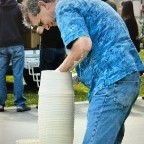

.thumb.jpg.8761b3d9b3da119b9e6d1912f67275ad.jpg)

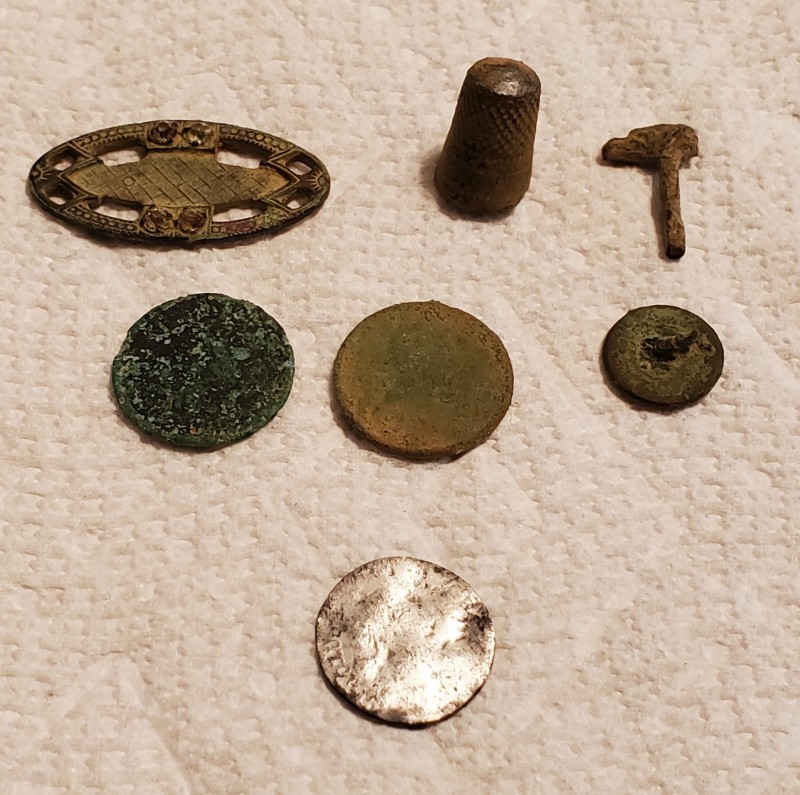
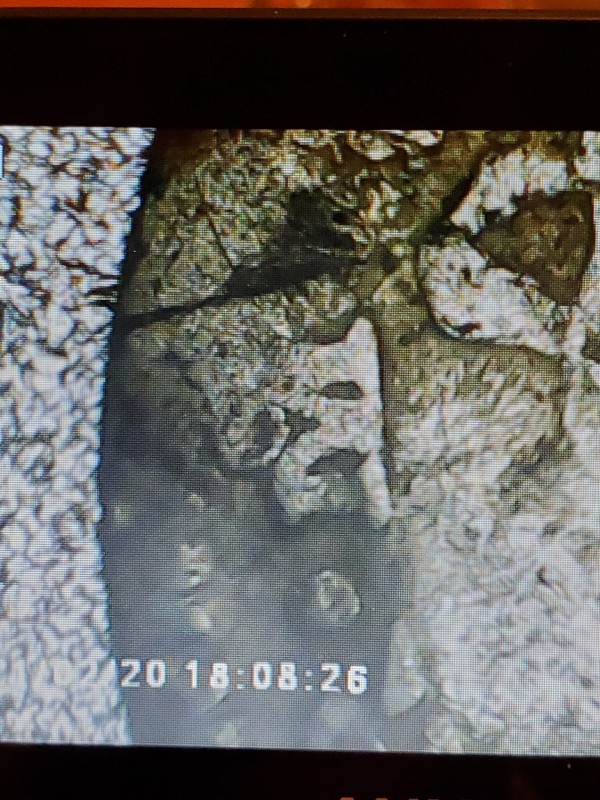
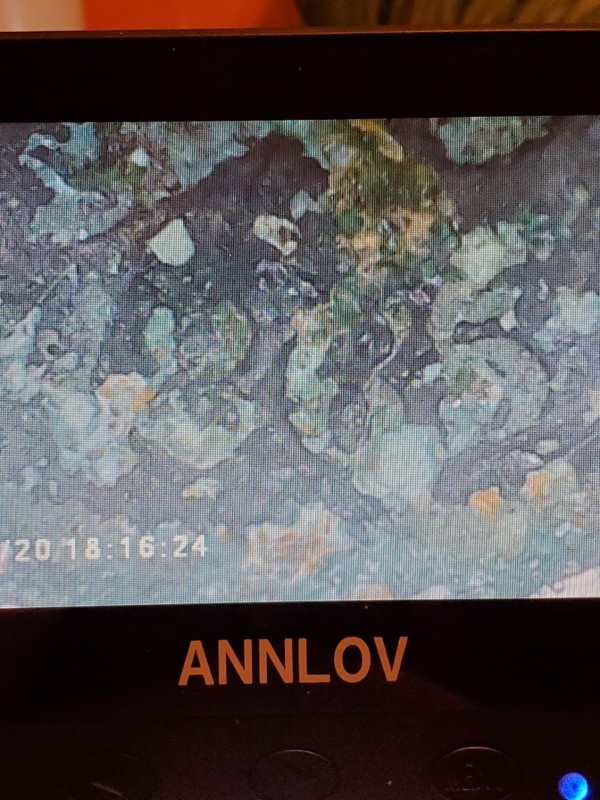
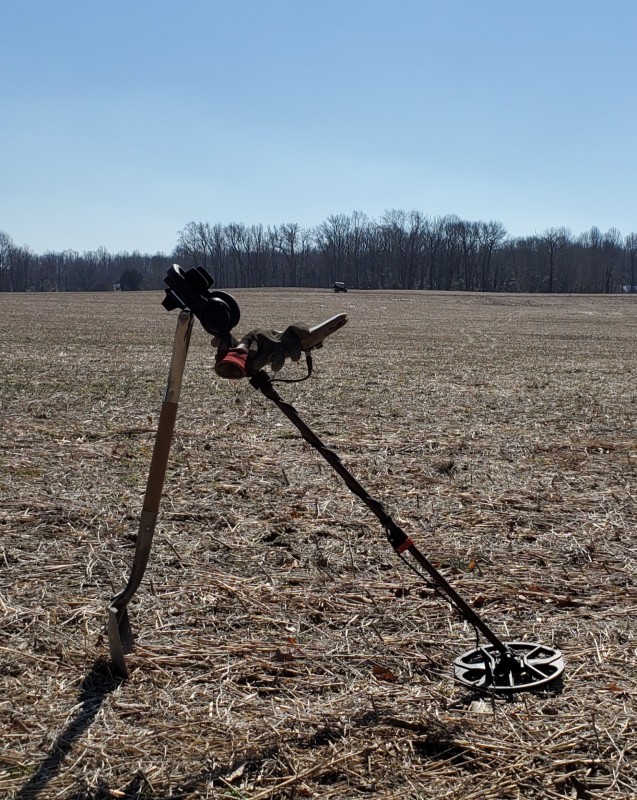
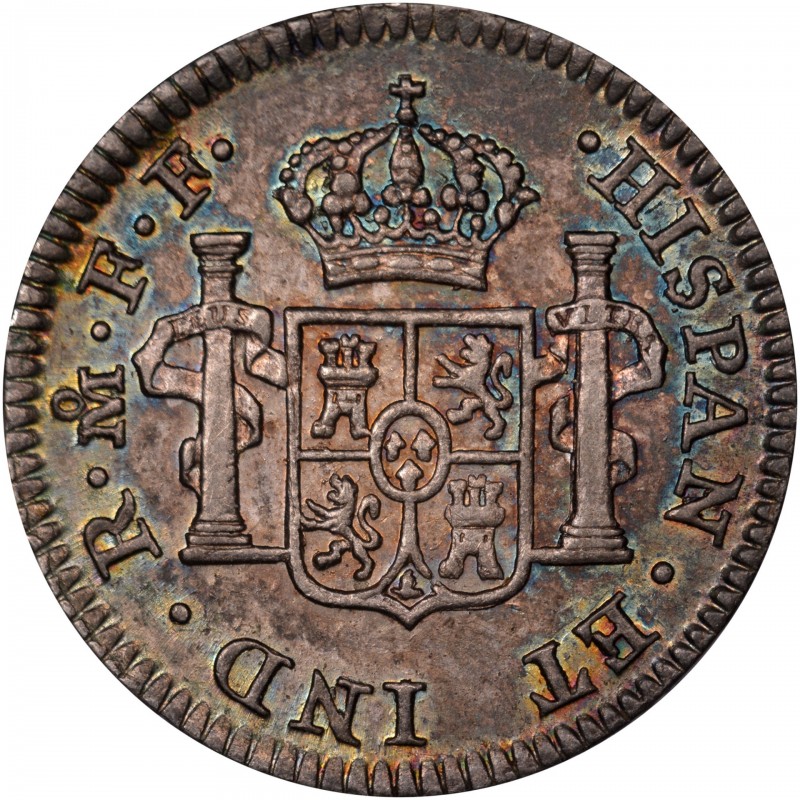
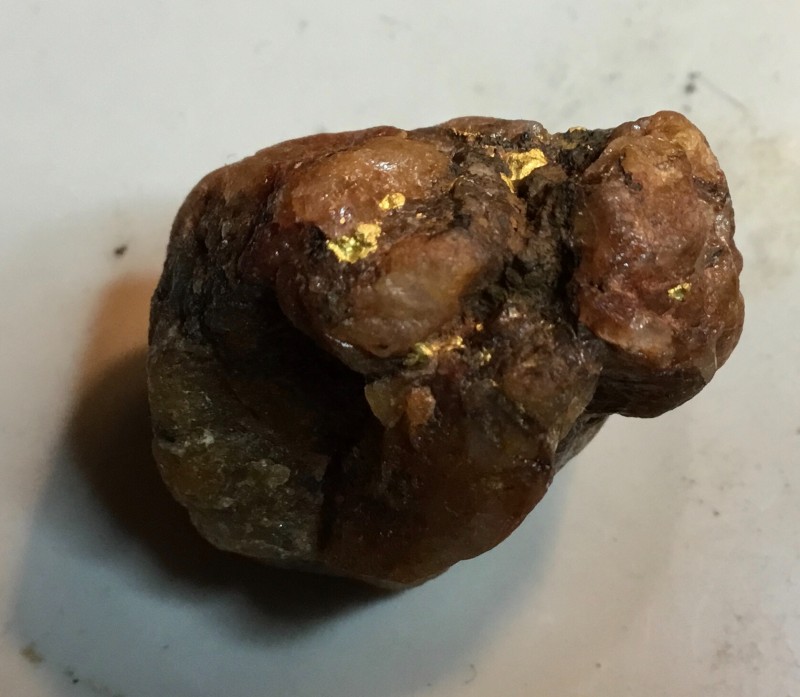

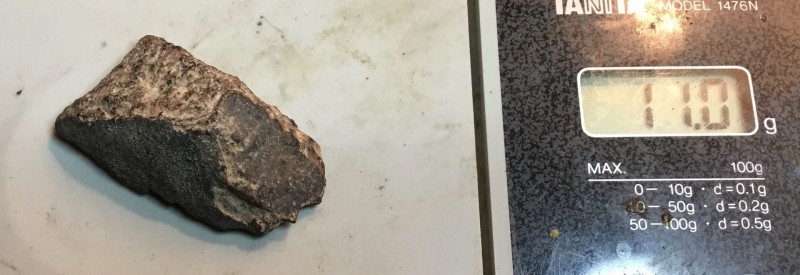

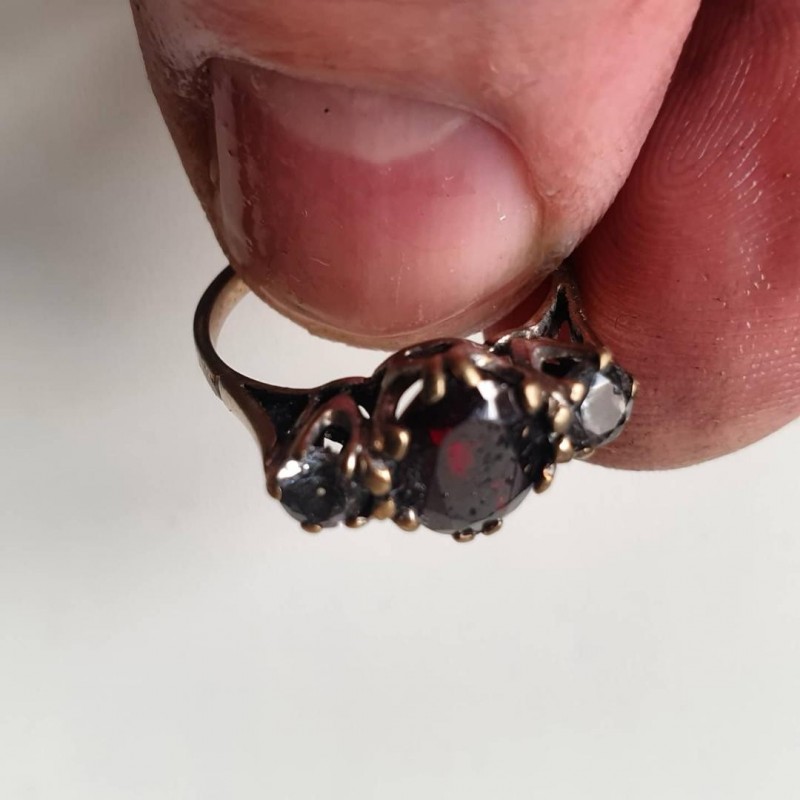
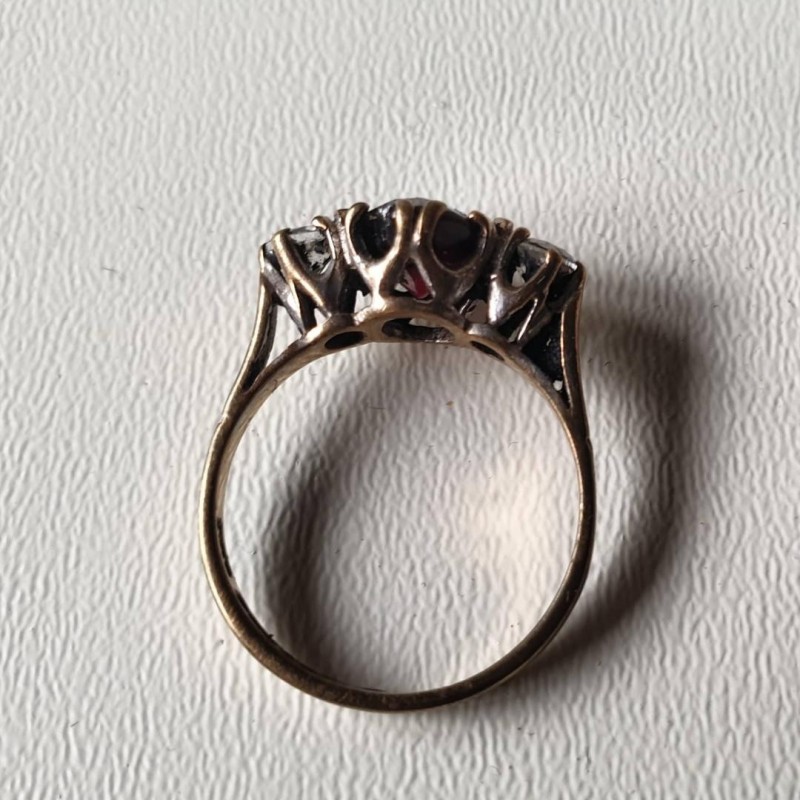
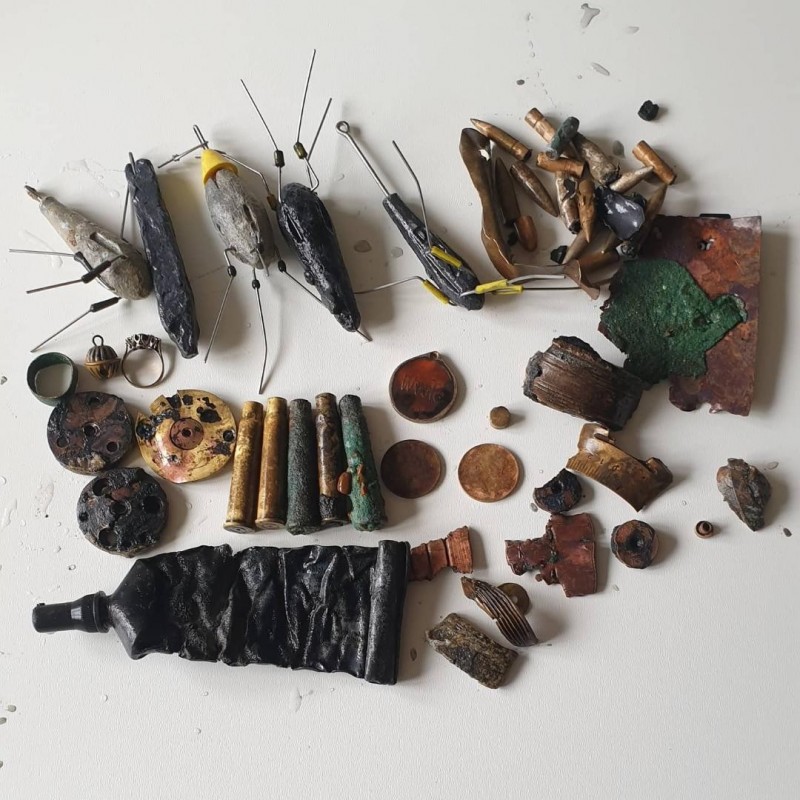
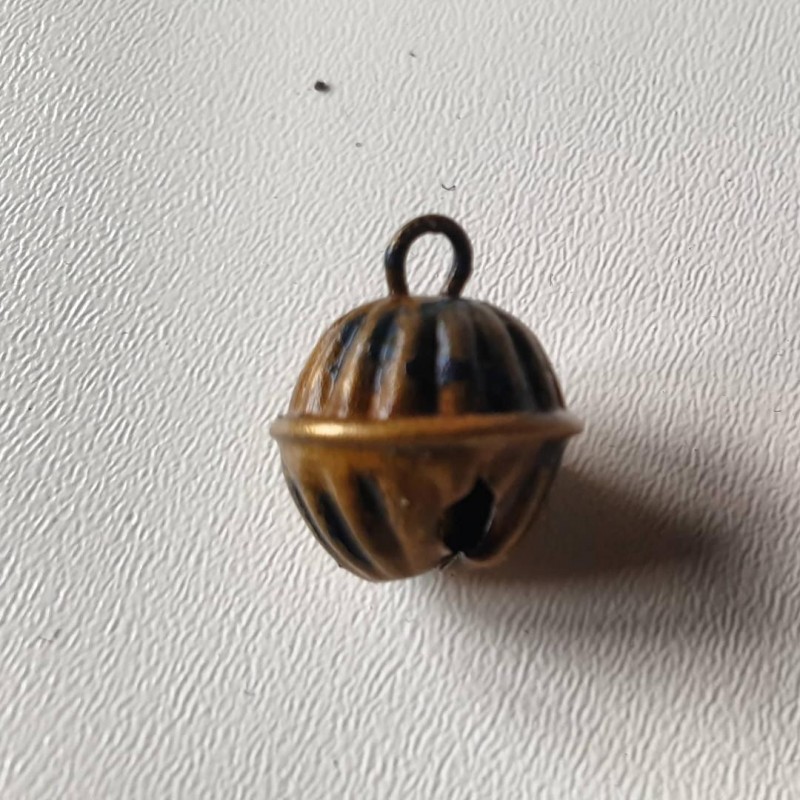
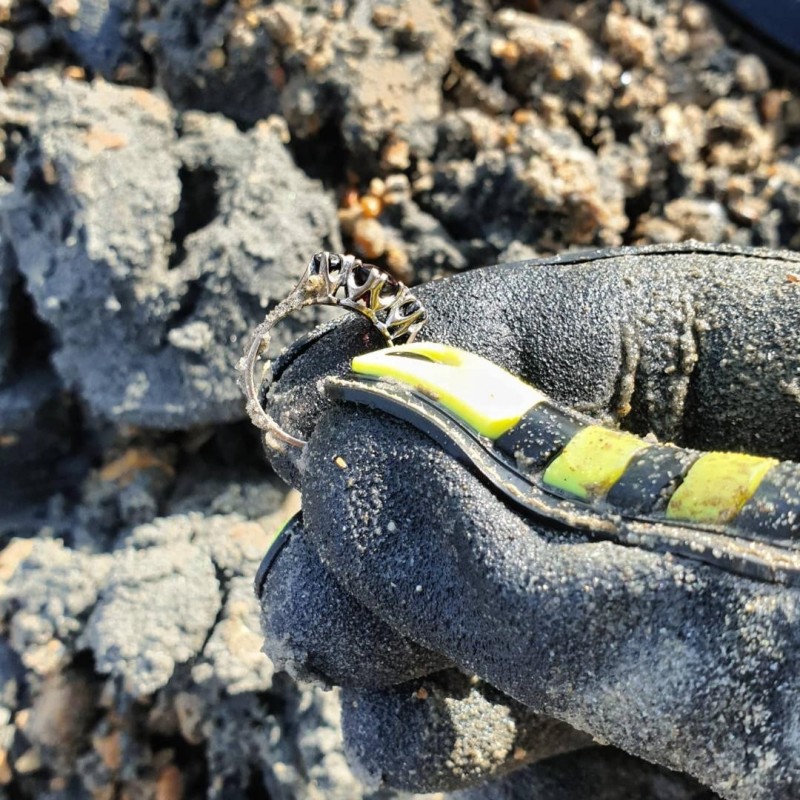
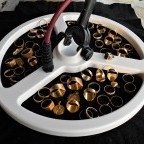
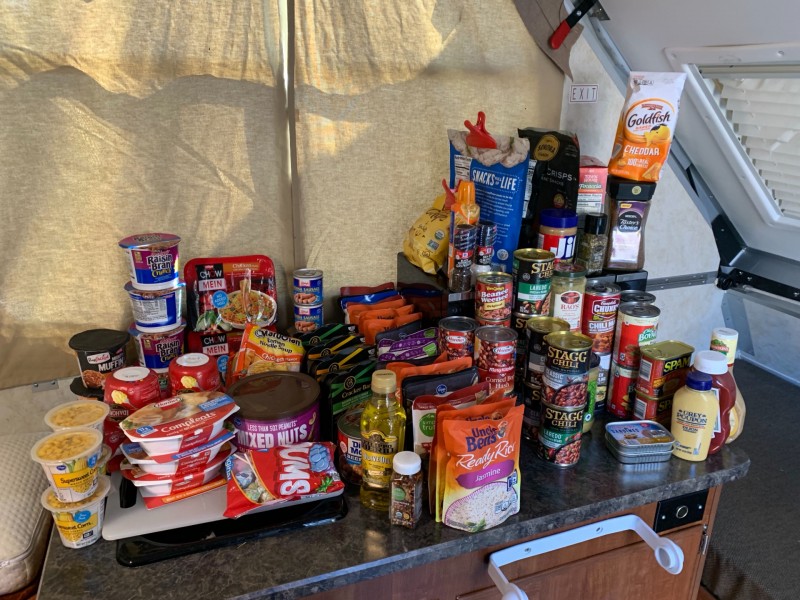


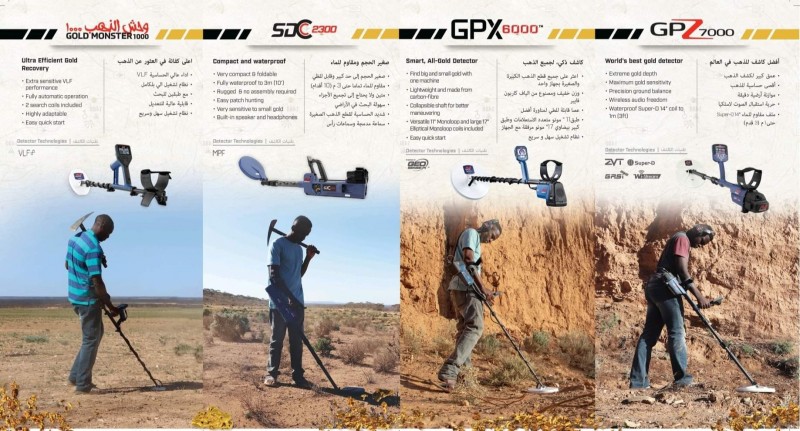
.thumb.jpg.008984156b596a0063f90b0d7fbc295b.jpg)
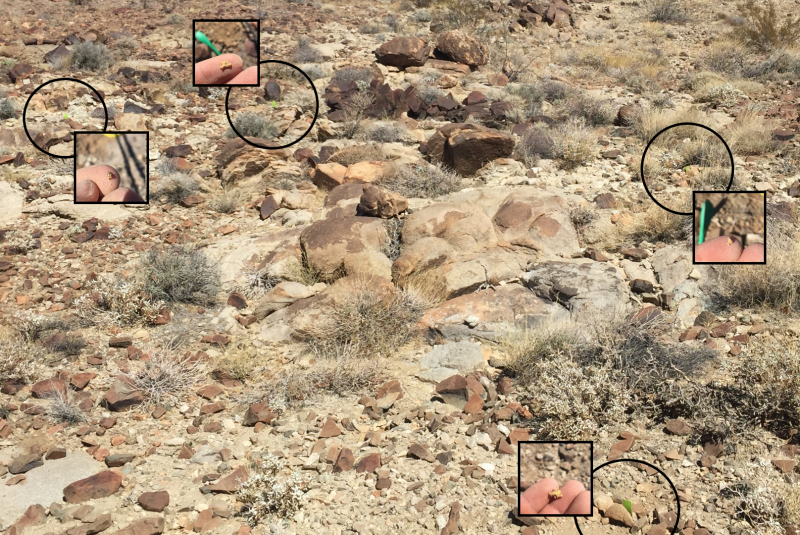
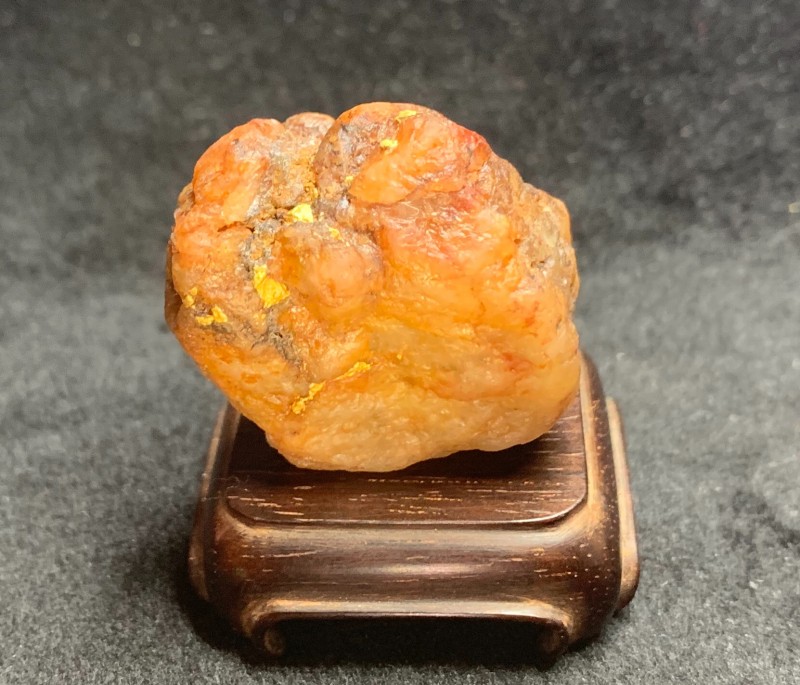
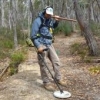
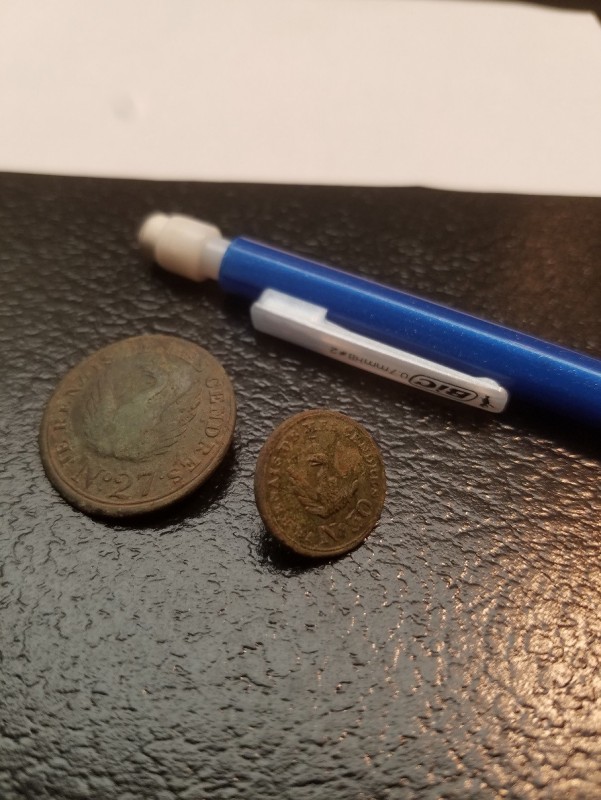
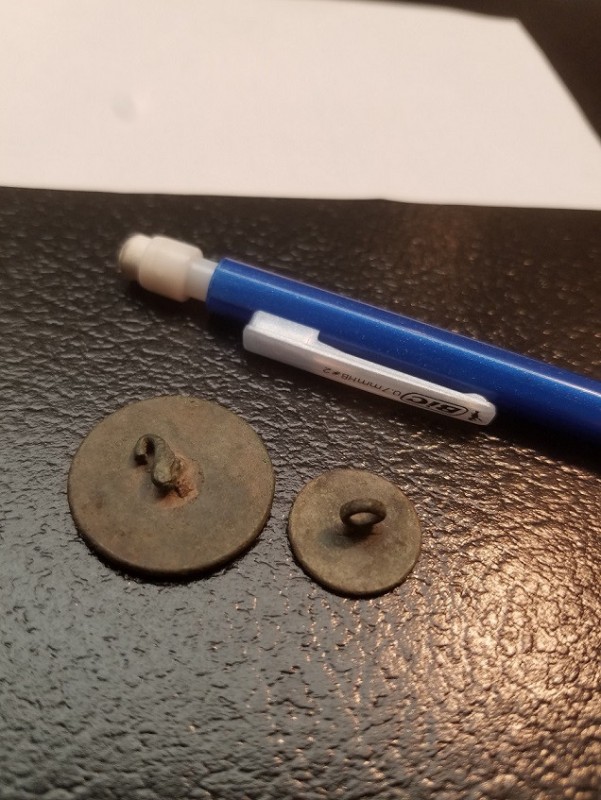
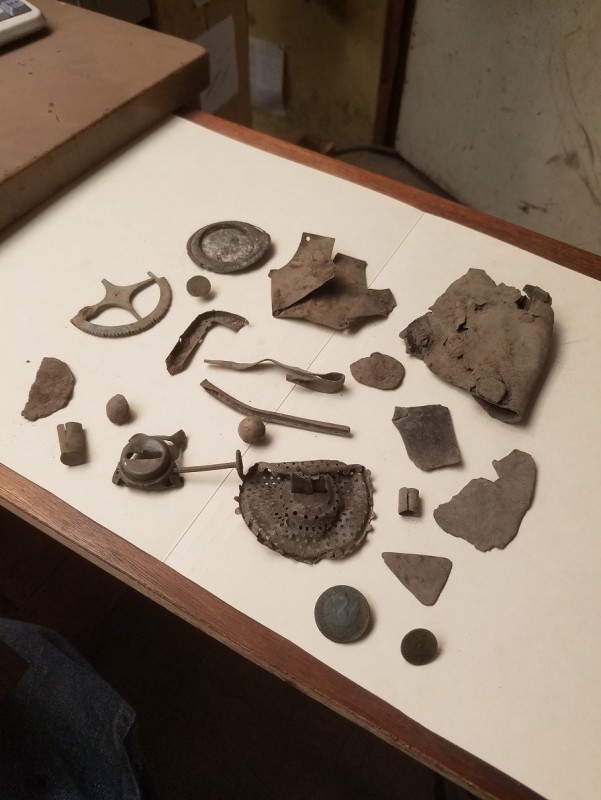

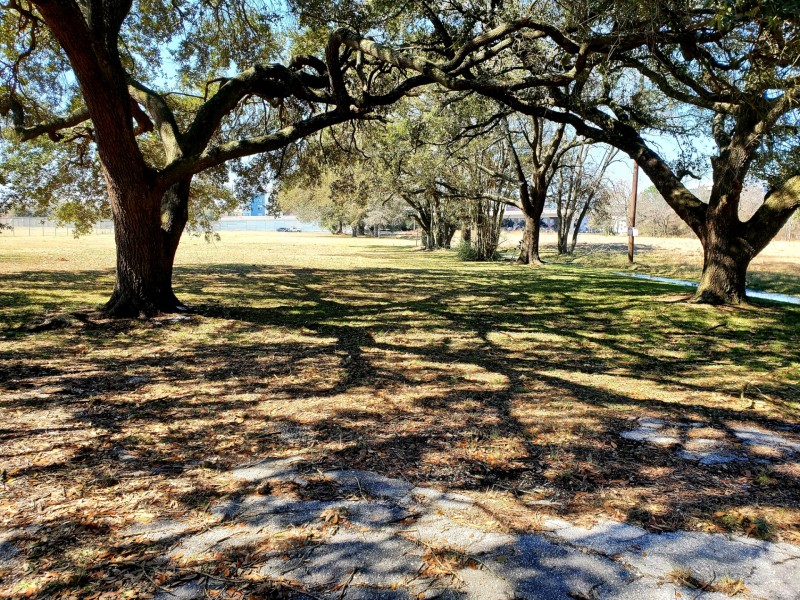
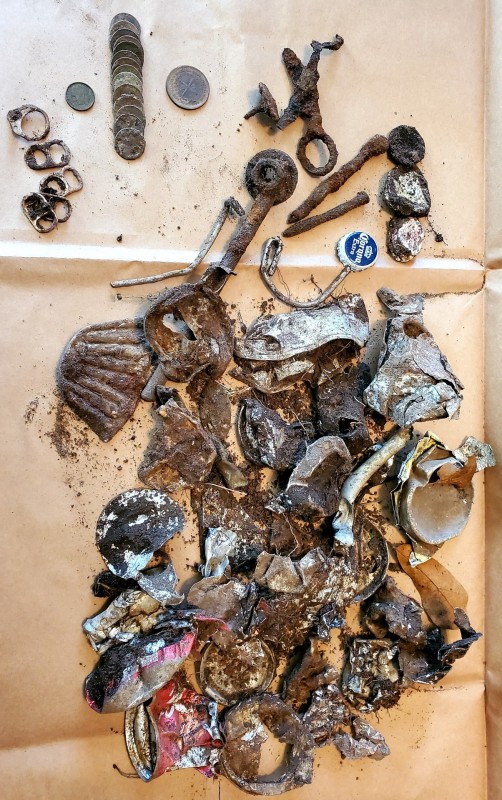
.thumb.jpg.77e4cb5bf39d44bdd2050d2edb7dfdb1.jpg)


